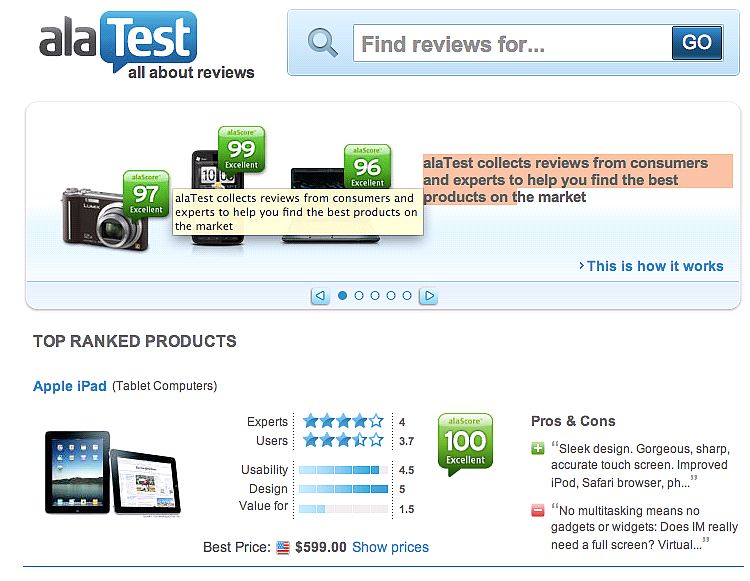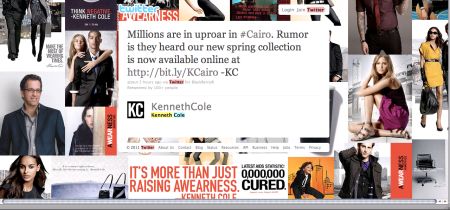By Alex Sanders, Head of design and brand strategy at Kyp, London
Just got back from the German Direct Marketing Congress in Wiesbaden, where Germany’s leading media heads and brands discussed trends and forecasts and presented best practice case studies. Centre of stage was social media and its effect on brands and consumers. I put together a brief summary and some selected case studies from the 2-day congress.
Consumer behaviour was a hot topic with a big focus on how social communication platforms such as Facebook and Twitter shape the cross media dialog and what it means for brands. In a nutshell, the consumer is more powerful than ever and brands have to readjust their attitudes to their customers and realize that they need their input for future, successful brand development.
Importantly, it means social media is not a catwalk for brands, but is a way to get closer to consumers, hear what they have to say and understand how they feel about their brand. The message was clear from all speakers: 1.Listen 2. Interpret 3. Create 4. Motivate!
Communication hasn’t changed: Times change, feelings remain the same. People have always loved to compare products and discuss experiences. New technologies have simply made it easier to do so, and will continue to shape the way we communicate (15 years ago hardly anyone had a mobile phone and Facebook is only 4-5 years old).
For brands this means intensive cross-media communication, with highly responsive and tailored approaches in social media channels. A new buzzword was introduced: Social Media Intelligence — SMI is required to analyze the consumer and tailor brand behaviour.
Case study Dell:
Dell uses Facebook and Google data to forecast demand for specific models. Google search volumes and the number of Facebook ‘Likes’ are used to gauge consumer appetite for the Dell’s products.
The power of the consumer: Peer2Peer marketing continues to grow. 90% of consumers in Germany rely on recommendations from friends or other consumers. 50% from search engines, 60% from publishing/magazines and 70% from articles. Recommendation via consumers and users are becoming more and more relevant. So much so that Tripadvisor rankings are more influential than hotel star ratings.
Social media posts can be the making or breaking of a brand. Lily Allen complained about the speed of her broadband connection to her 2 million online followers — BT took this seriously and swiftly responded with a call from the CEO. While your average twitterer doesn’t hold this kind of sway, we are increasingly aware of our influence over brand perception.
Consumer brand loyalty is suffering in economic crisis. Consumers buy products cheaper online, compare prices and are quicker to change brands and products – but are unwilling to compromise quality or service. Aldi, the German grocery store, is one of the most trusted brands in Germany. Brands need to manage expectations, and so build and maintain trust!
Welcome, the super review! Alatest — a search engine that collects consumer and expert reviews from consumers and experts from across the web to help you find the best product on the market. Interestingly, according to Alatest, the iPad doesn’t reflect value for money but it is still the top ranked product by experts.

The power of the brand. Insights demonstrate that it is more difficult for brands to control their image and need carefully consider their every move. Mistakes can longer be hidden and any slip-ups can and will spread across the web at warp speed. Think about the failed GAP logo redesign that unveiled to an avalanche of criticism across thousands of blogs and social media updates. And today’s news is no longer tomorrow’s cheap paper — the Internet has a good memory! For example, I easily tracked down the “deleted” tweet by fashion label Kenneth Cole that caused a social media uprising by exploiting the political situation in Egypt to promote its latest collection. I am unsure if the subsequent apology tweet mended the damage done to the brand.
And finally: The power of a brand is in how you experience it. Our changing reality means that we need to implement new methods and new ideas to stay ahead and engage consumers. The Mini Getaway competition in Stockholm, which began as a launch of a new car model, created a movement!
Consumers were invited to hunt and catch a virtual MINI in Stockholm city. You used an app where you could see the location of the virtual MINI, all other players and yourself. If you got closer than 50 metres of the virtual MINI, you could take it with your iPhone. Then you had to get away, because anyone within 50 metres could take the MINI from you. The person with the virtual MINI when the game finished won a real MINI Countryman. During the game week 11,413 people participated with an average gaming time of 5 hours and 6 minutes per person
This is a great example for how stories sell. The power of storytelling becomes more and more relevant. Storytelling means that people can experience and become a part of a brand — rationally, emotionally, and in a memorable way.
It is essential for a brand to use a multi-channel/touch-point approach. Through increased user-generated content, the marketing dialog has truly become a two-way event: people talk about good stuff they experience and they talk even more about bad stuff that happens, they do so 24/7 in real time. Adopting a social media affinity is vital but it’s no use if there is ‘no share of wallet without share of heart’ — brands have to earn the consumers’ attention. So, let’s give it some heart.
About the Author
Alexandra Sanders is a brand strategist who is currently heading up the global creative team at Kyp, an international marketing communications agency, with clients such as Sony, BP, American Express, Novartis, O2, BBC, Shell and the list goes on.


